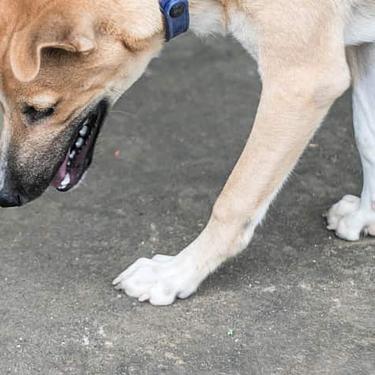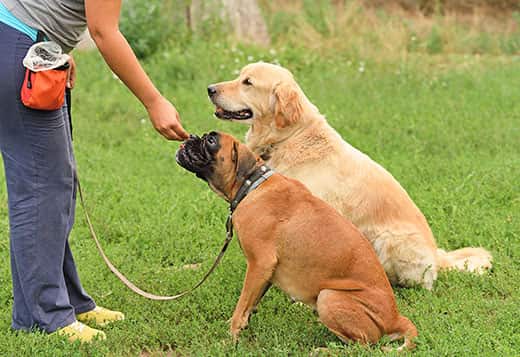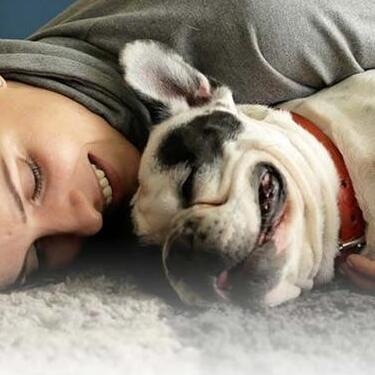
-
Find the right food for your petTake this quiz to see which food may be the best for your furry friend.Find the right food for your petTake this quiz to see which food may be the best for your furry friend.Featured products
 Adult Small & Mini Lamb Meal & Brown Rice Recipe Dog Food
Adult Small & Mini Lamb Meal & Brown Rice Recipe Dog FoodFor the faster metabolism of Small & Mini dogs
Shop Now Adult Chicken & Barley Recipe Dog Food
Adult Chicken & Barley Recipe Dog FoodSupports lean muscle and beautiful coat for adult dogs
Shop Now Puppy Lamb Meal & Brown Rice Recipe
Puppy Lamb Meal & Brown Rice RecipeVital nutrients to support 5 essential building blocks for lifelong health
Shop NowFeatured products Adult Chicken & Barley Recipe Dog Food
Adult Chicken & Barley Recipe Dog FoodSupports lean muscle and beautiful coat for adult dogs
Shop Now Adult Indoor Chicken Recipe Cat Food
Adult Indoor Chicken Recipe Cat FoodSupports energy level and beautiful fur in indoor cats
Shop Now Hill's Science Diet Adult Sensitive Stomach & Skin Chicken Recipe Dog Food
Hill's Science Diet Adult Sensitive Stomach & Skin Chicken Recipe Dog FoodHighly digestible recipe, gentle on stomachs. Nourishes skin & promotes a lustrous coat
Shop Now -
Dog
- Dog Tips & Articles
-
Health Category
- Weight
- Food & Environmental Sensitivities
- Urinary
- Digestive
- Joint
- Kidney
-
Life Stage
- Puppy Nutrition
- Adult Nutrition
- Senior Nutrition
Cat- Cat Tips & Articles
-
Health Category
- Weight
- Skin & Food Sensitivities
- Urinary
- Digestive
- Kidney
-
Life Stage
- Kitten Nutrition
- Adult Nutrition
Featured articles My Pet Ate a Lizard — What Should I Do?
My Pet Ate a Lizard — What Should I Do?Learn what to do if your pet eats a lizard, including whether they can be toxic and symptoms to keep an eye on when they've swallowed one.
Read More Pet Dental Health: What Happens During a Deep Teeth Cleaning?
Pet Dental Health: What Happens During a Deep Teeth Cleaning?Learn about veterinary dental care for your pet, including deep teeth cleaning procedures, which can help your dog or cat maintain proper dental health.
Read More Virtual Vet Visits: What You Need to Know
Virtual Vet Visits: What You Need to KnowLearn the ins and outs of a televet appointment before you talk to a vet online.
Read More -

Maybe you already have a dog. Or perhaps you're getting your home ready to welcome one into your life. Now you're debating whether you want to double up on the furry love. Are two dogs better than one? Adopting two dogs at once is a big responsibility, but it's also a wonderful opportunity. Consider your current lifestyle, breed choice and long-term goals first. You want to make sure that the dog — or dogs — you bring home are the right fit in terms of energy, size and needs.
Understanding the Benefits of Canine Companionship
There are going to be times when you can't be at home with your dog. One benefit of having two dogs is that they'll keep each other company. If the dogs get along well, the companionship will help prevent boredom. They keep each other busy, which means the dogs will have less time for destructive behaviors, such as chewing things they aren't supposed to. They'll play together, burn energy and be less dependent on you for exercise and diversion. They'll also become better socialized with other dogs, so if you have friends with pets that enjoy play dates, invite them all over for your next cookout.
Considering the Costs
Having two dogs can be expensive. When you're deciding how many to adopt, think about long-term and short-term costs. The basics you'll need to get before bringing them home include dog food (and treats), collars and leashes. These are all relatively inexpensive, though adopting two dogs at once means more of everything. Invest in other items, such as toys and dog beds. They may be able to share toys with no problem, but be considerate of their feelings. If one dog gets protective over a certain toy, it might be best to get a second one for your other pal so they don't have to fight over it. Create a house of plenty with lots of toys, and rotate them so the two dogs have no reason to argue over resources.
In the long term, you'll ultimately spend more money with two dogs. Consider annual and unexpected veterinarian visits. Both dogs will need routine office visits and vaccinations. But dog-related costs aren't the only financial costs to consider. Have you started planning your next Caribbean vacation? It may be tough to find someone willing to dog-sit both of them at the same time. If you can't find a sitter, you'll have to board your pups, and that price tag can get hefty.

Adopting Two Dogs at Once
Any major transition can stress dogs. Adopting two pups from the same litter may ease the change of environment. However, adopting littermates often results in the puppies bonding more closely with each other than with their human. Many experts recommend that you avoid adopting littermates. Instead, consider adopting youngsters close in age but from different litters.
When you bring home two puppies, expect more work upfront. Right from the get-go, it's important that your dogs arepotty trained and that you address any negative behaviors. By putting in the training time right away, your dogs will be at similar levels. Having two dogs means they learn together. Any redirection one dog receives, the other will witness and learn from, too.
You may find shelters that require some dogs to be adopted as a pair. This is typical of dogs who were brought to the shelter together. To help them avoid separation anxiety and other issues, shelters often ask that you adopt both dogs. This can be a great option if you're a new dog parent, as you're getting dogs who are already socialized with one another and shouldn't have as many associated behavioral or territorial issues.
Staggering Adult Dog Adoptions
If you're a new pet parent, adopting dogs at different times may be slightly easier than managing two different personalities and behaviors without any experience. If you want to go this route, start training immediately with your first dog, and when you feel they've mastered the skills, bring the second dog into your home. While all situations are different, your second dog may follow the lead of your first dog, making training easier on you and quicker for them.


Tasty Tips
Watching for Signs Your Dogs Don't Get Along
Just because you're ready to grow your family with another dog, it doesn't mean both dogs are looking for a partner in crime. For dogs who aren't keen on sharing their house with another pup, inappropriate behaviors may occur. Well-socialized dogs rarely become aggressive. More often, they act bossy and want to show a newcomer who runs the show. A pushy dog uses the following signals, alone or in any combination, to show their status and get their way:
- Stands on tiptoes or "looms" over the other dog
- Holds eye contact with ears forward and sometimes lips vertically retracted
- Fluffs fur (raised hackles) over the shoulders
- Rests head, chin or paws over the neck or body of the other dog
- Body slams during play, or pushes and bowls over the other dog
- Grabs the muzzle or neck of the other dog (an inhibited bite)
- Mounts or clasps the other dog
Peacekeeping dogs also signal "no threat" to diffuse potential problems. They may turn away or avert their eyes from the other dog's stare. Lip licking, yawning, pawing and sniffing help calm down concerned dogs. The ultimate appeasement gesture, rolling over to bare the tummy, can assure the concerned dog that there's nothing to worry about. Lying down, crawling while wagging their tail or even play-bowing — all invitations to play — can change the scared or bossy dog's attitude.
Arguments sometimes happen between friendly dogs, and most know how to fight and argue without hurting each other. They "play bite" with less pressure, or snap in the air without making contact. Dogs use body language and vocalizations to warn other dogs to back off. Signs of aggression include a hard stare, growling, barking and snarling. This typically happens around resources important to the aggressing dog, like toys and food, or due to feeling crowded in doorways or halls. If the other dog doesn't signal deference with an appeasement gesture, the aggressive dog may escalate. These altercations sound scary. The important issue is to avoid a situation that may cause injury.
When threats proceed to lunging, snapping or biting, separate the dogs immediately. Stay safe — don't touch them. If you can't call them apart, drop a large towel or blanket over the pair to distract them and provide something else to bite, and get them into different rooms to cool down. Next, either enlist the help of a professional dog trainer or consider separating the dogs for good. You can find training and behavior resources at the Association of Professional Dog Trainers or the International Association of Animal Behavior Consultants, or ask your vet for a referral to a veterinary behaviorist.

Improving the Odds Your Pups Will Be Best Pals
To improve the odds that the dogs get along, choose complementary types. Consider each dog's size, personality, age, sexual and health status, and activity level. Older dogs may not put up with a brash, in-your-face puppy, and a large, boisterous dog might accidentally hurt a much smaller pup. Healthy dogs often bully ill ones, and intact dogs are more likely to challenge the social status of a resident dog.
Neutering/spaying all the dogs takes hormones out of the equation. Ideally, choose a well-socialized second dog near the same size, age and activity level as your resident pup. The American Kennel Club (AKC) says pairing dogs with similar energy needs makes for the best companions. Opposite sex pairings often work well, too. For example, if you have a 6-year-old female golden retriever, a 4-year-old active male beagle may be a good companion. Also, look for a happy, easygoing personality, as they usually get along well with the greatest number of doggy personalities.
If you already have one dog in your home, bring them to the shelter to meet their possible new companion. Most shelters are fine with this and, in fact, recommend it. It will help you get a better sense of whether the two dogs will get along well, helping make your decision a little easier. Dogs at the shelter who are a little timid toward you or other dogs aren't necessarily bad second companions; they may have just had unpleasant experiences in their lives before they came to the shelter. Dogs from shelters may take several days to a couple of weeks to decompress from the experience and show their true personalities. The AKC suggests using crates, pet gates and exercise pens during the introduction process. Sometimes a little bit of love is all it takes to get a shy pup to come out of their shell and become another beloved member of the family.
So, are two dogs better than one? Only you can tell whether you're ready to open your home and your heart to multiple dogs. Your lifestyle is unique, and your pup parenting will be too.


Amy Shojai, is a certified animal behavior consultant, and nationally known authority on pet care and behavior. She began her career as a veterinary technician and is the award-winning author of more than 35 prescriptive nonfiction pet books.
Related products

For the faster metabolism of Small & Mini dogs

Supports lean muscle and beautiful coat for adult dogs

Vital nutrients to support 5 essential building blocks for lifelong health

Supports energy level and beautiful coat in mature dogs who prefer smaller kibble
Related articles

Your dog's coat and skin are a big part of your dog's overall health. Ensure you keep your dog's coat healthy, by following these simple tips.

Discover how the field of dog science is giving us more and more insights into the inner workings of our furry best friends.

Learn about Hill's puppy food and the nutritional benefit & high quality ingredients that it contains for your pup.

Proper nutrition for your pregnant or nursing dog is vital to her and her puppy's health. Learn what you should do provide her with the proper nutrients.

Put your dog on a diet without them knowing
Our low calorie formula helps you control your dog's weight. It's packed with high-quality protein for building lean muscles, and made with purposeful ingredients for a flavorful, nutritious meal. Clinically proven antioxidants, Vitamin C+E, help promote a healthy immune system.
Put your dog on a diet without them knowing
Our low calorie formula helps you control your dog's weight. It's packed with high-quality protein for building lean muscles, and made with purposeful ingredients for a flavorful, nutritious meal. Clinically proven antioxidants, Vitamin C+E, help promote a healthy immune system.

